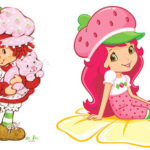When was the last time you went through the aisles of your local toy store? Have you looked at the recent array of children’s toys targeted at girls?
Recently, I went to get a children’s gift and I found myself not familiar with any of the toys that I had known in my childhood days. The toys may have been called the same name, but the look was completely changed, and I asked myself, “These are girl’s toys?!” The messages these toys gave off was a tone of sexuality that I had never seen before. There was lipstick, eyeshadow, crop tops, and unattainable bodily proportions on dolls.
These toys targeted at children, specifically girls, got my mind thinking on the mental conditioning young girls begin to go through at a young age. Even at a young age, girls must look a certain way. The look of a girl is not allowed to last long before she must outgrow the outward appearance of a child. I was shocked to see a “Dora the Explorer” completely revamped. No longer was her hair in a bowl cut, she had long hair (often a sign of youthfulness), lipstick on, new outfit with leggings, and jewelry. Dora was no longer the young girl I had remembered but seemed to be a woman in her twenties. Does this type of toy begin the process of changing a child into a woman?
Children try to emulate what they see and dolls like this Dora, give off a certain message if hypersexuality.
The sexing up of children’s toys does not stop there. Board games such as Clue have been adapted to show a sexpot woman with cherry lips luring you in. The Ice Queen from the innocent game Candy Land got a sexy makeover with attractive face dimensions (small chin, big eyes, tiny nose, full lips). Holly Hobbie is no longer in rags and a bonnet, but tight-fitting clothes that appear to have a hippie aesthetic. These are just a few of the changes that have come about in toys.
This has my mind convinced that the innocent look of a girl is becoming smaller and smaller. According to a 2013 study by Experian Marketing Services, forty-five percent of 6- to 9-year-old girls use lip gloss or lipstick, 61 percent wear nail polish (up from 54 percent in 2008) and 42 percent use perfume or body spray. Where do these ideas come from? I would argue it is the marketing of toys, like these, that pervade the image that girls must turn into young women even faster.













As someone who is also a woman and grew up playing with numerous “girls” toys as a child, this topic hits close to home. I think it’s really quite odd how sexualized children’s toys are, especially in the past 20 years. I think back to my childhood and even in video games, I would want to play as the pretty girl, one that pleases the male ideal.I also think we see this so much now with the rising issue of young girls going to makeup stores like sephora, and the discourse around that.
Hi Kaylee. Thanks for writing on this topic. I have never noticed this phenomenon but it seems concerning. The statistics you cite about the number of young girls using lip gloss is disturbing and I agree with your argument that this is in part due to the sexualization of girls toys. Children’s toys have been around for a long time and have never looked like the images you included. And I doubt that this many young girls have ever been using makeup. I don’t think that these two phenomena occurring at the same time is a simple coincidence.